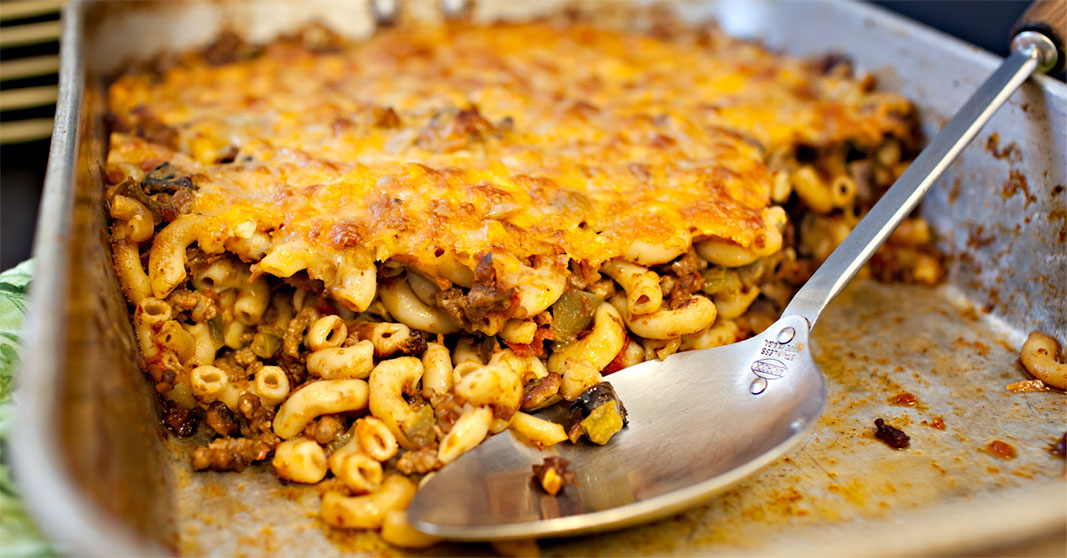American chop suey. Chili mac. Goulash. Slumgullion. They’re all in the same macaroni-ground-beef-and-tomato family—stovetop comfort classics from the working-class weeknight tradition. Ohio’s favorite ground-beef casserole is kin to those dishes, but not quite a sibling. It goes by the name Johnny Marzetti.
A proper Marzetti is baked, unlike its stovetop cousins. In the oven, the flavors marry, the cheese browns, and the edges get appealingly crusty. Think of it as lasagna for the hoi polloi. You make it when you need to feed a crowd: a soccer team, a church congregation, a house full of college roommates. For decades, it was a cafeteria fixture in the Rust Belt.
Its origin story has taken on some mystique among food history nerds in Ohio. The standard version: Joseph Marzetti opened a restaurant in Columbus in 1896, near the Ohio State University. His wife, Teresa, created the hearty casserole as a cheap way to quell students’ appetites. According to legend, she named it for her brother-in-law, Johnny.
The name is part of the appeal. You feel like a friend is coming over when you say, “We’re having Johnny Marzetti!” It’s likely, though, that we don’t know the casserole’s namesake. No one has been able to find the dish on a vintage menu from Marzetti’s. The family—which has gone on to success with the T. Marzetti Company, launched in 1950 to sell Teresa’s salad dressings—has never claimed it, though they’ve had many opportunities to corroborate accounts from sources like Ohio History Central and, ahem, yours truly, in my 2018 book Tasting Ohio: Favorite Recipes of the Buckeye State.
The legend has a tidiness that you want to believe. Periodically, a determined writer will do a deep dive trying to reach the more complicated truth, each time getting closer to an answer. In 2018, Eric Lyttle did an excellent job for Columbus Monthly. We do know that the casserole goes way back. The Columbus Dispatch printed a recipe for Marzetti—one that’s notably more kicked-up than its descendants, calling for chili powder and cayenne pepper—in 1916.


